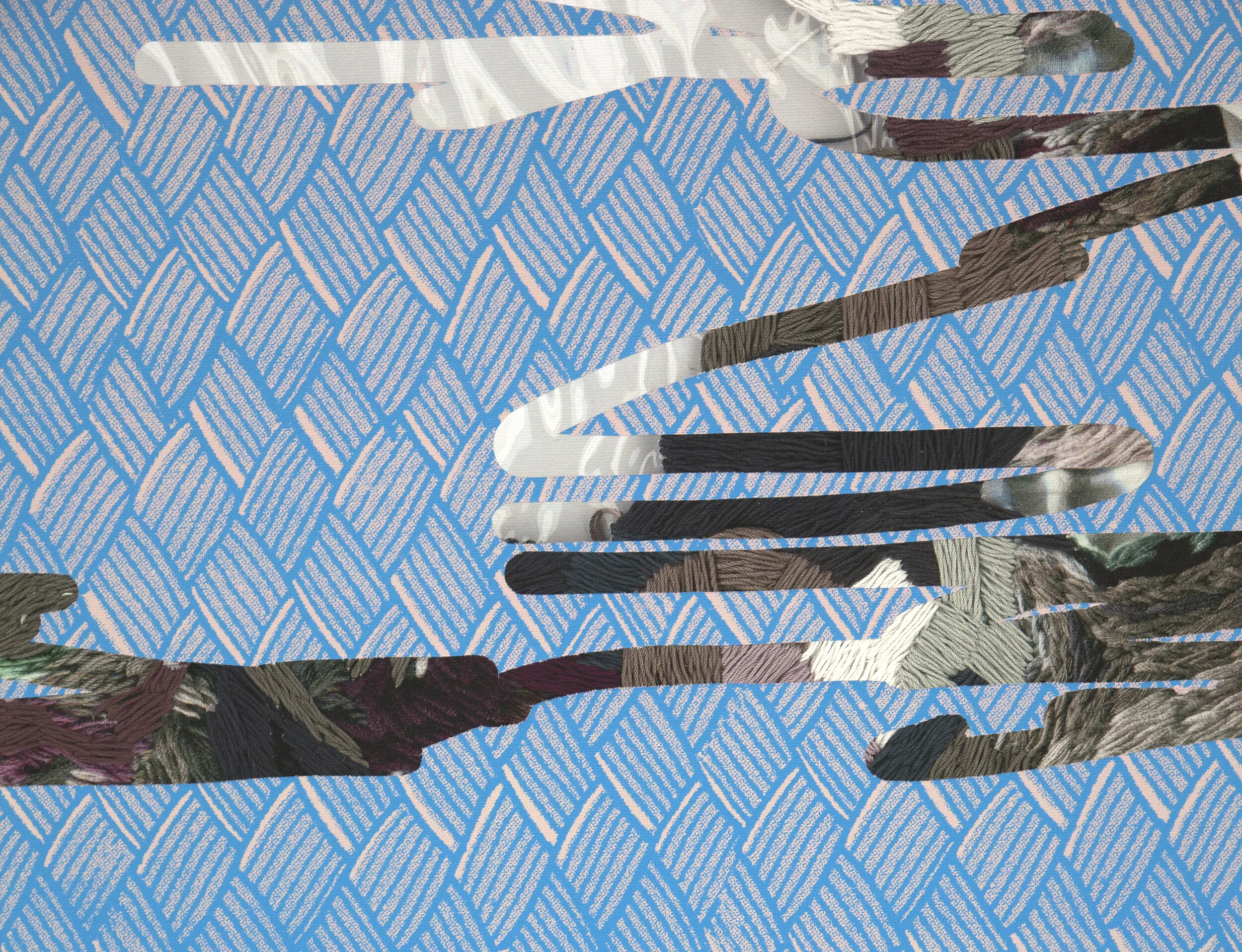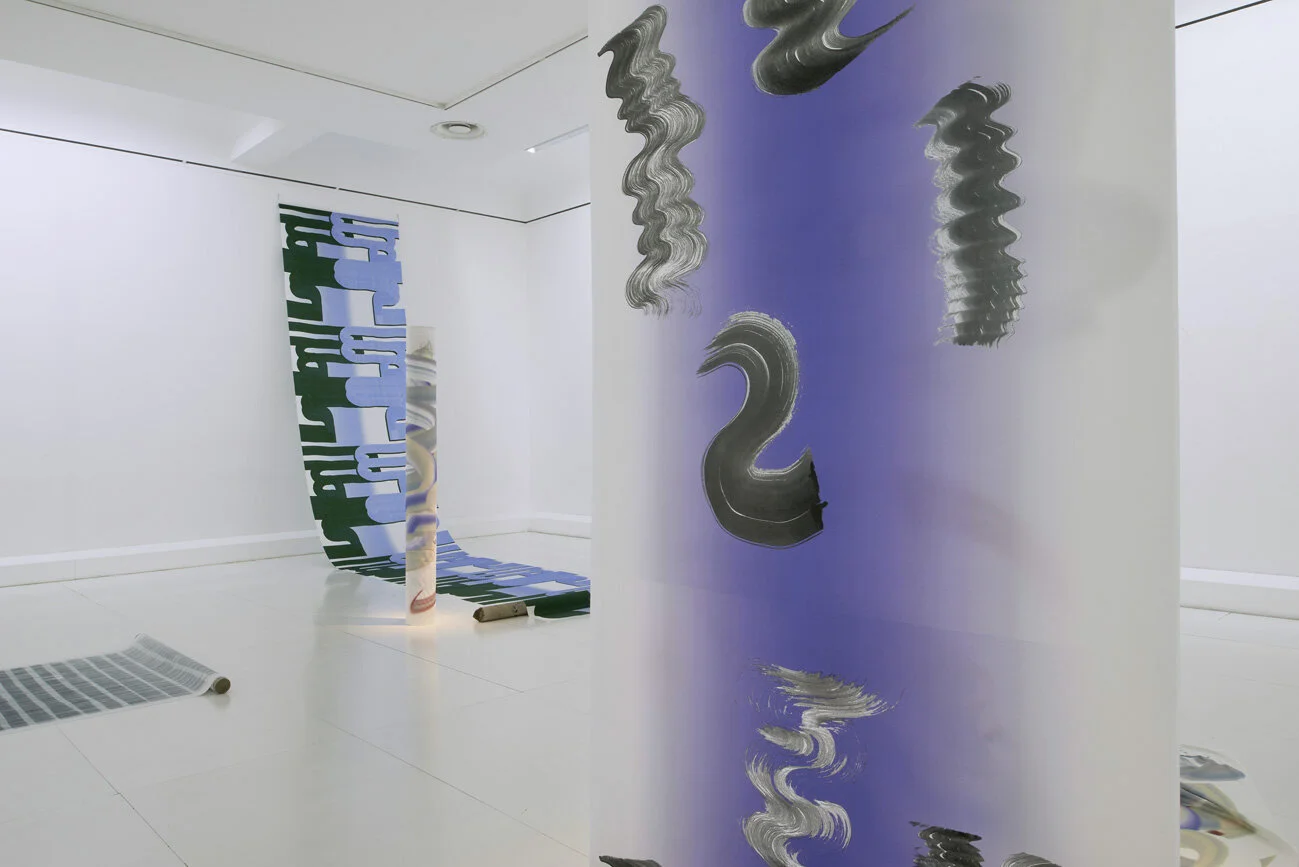Stefanie Kägi,
ARTIST
December, 11th 2020
ENG
Stefanie Kägi is a Swiss artist who lives and works in Berlin. After studying design and decorative arts in Zurich, she continued her education in Berlin, studying painting at the Weissensee School of Art.
It is precisely the propensity for painting to hold together and give coherence to a multiform body of work, which interweaves materials and textile techniques with digital image processing.
Analog and digital techniques interpenetrate in her work, finding in the error and imperfection new formal solutions that extend the boundaries of pictorial investigation.
ITA
Stefanie Kägi è un’artista svizzera che vive e lavora a Berlino. Dopo aver compiuto studi di design e arti decorative a Zurigo ha proseguito la sua formazione a Berlino, studiando pittura alla Scuola d’Arte Weissensee. E’ proprio la propensione alla pittura a tenere insieme e dare coerenza ad un corpus di lavori multiforme, che intreccia materiali e lavorazioni tessili con processi di elaborazione digitale dell’immagine. Tecniche analogiche e digitali si compenetrano nel suo lavoro, trovando nell’errore e nell’imperfezione nuove soluzioni formali che estendono i confini dell’indagine pittorica.
ENG
LZ: Your artistic approach is often characterized by the combination of analogue and digital techniques. Could you explain how your process of hybridization and overlapping between weaving, embroidery and digital scan work?
SK: My focus is on pictorial representation made by the touch of hand or the means of a machine. I investigate processes of interweaving digital and analog practices.
I combine for example the irregularities of craft techniques and the slowness of their production, with the speeds of scanning machines, as well as self-induced digital errors, using a scanner or photoshop to create images which I render on paper, canvas or directly on the wall.
Bringing together depth and flatness I consistently strive to experiment with speed and imperfection. The resulting works are characterized by shifts between flat planes of color and an illusory depth.
IT
LZ: Il tuo approccio artistico è spesso caratterizzato dalla combinazione di tecniche analogiche e digitali. Potresti spiegare come funziona esattamente questo tuo processo di ibridazione e sovrapposizione di tessitura, ricamo e scansione digitale?
SK: La mia attenzione si concentra sulla rappresentazione pittorica fatta con il tocco della mano o attraverso gli strumenti della macchina. Indago i processi di intreccio tra pratiche digitali e analogiche.
Ad esempio, combino le irregolarità delle tecniche artigianali e la lentezza della loro produzione, con la velocità macchine di scansione, o con errori digitali auto-indotti, utilizzando uno scanner o photoshop per creare immagini che poi riproduco su carta, tela o direttamente sulla parete.
Mettendo insieme profondità e superficie mi sforzo costantemente di sperimentare con la velocità e l’imperfezione. Le opere che ne risultano sono caratterizzate da continui spostamenti tra zone piatte di colore e un’illusoria profondità.
O.T (Gewebe), silkscreen, acrylic and embroidery on canvas, 180 x 120 cm, 2018.
Needlework (series), yarn on inkjet print, 85 x 65 cm, 2018.
Nails and Needles, ASPN Galerie, Leipzig, 2019.
EmbroideryLatex#1, bomber jacket, in cooperation with Sabrina Bosshard, 2015-2016.
ENG
LZ: Richly embroidered or hand-painted clothes hang from the ceiling in some of your solo exhibitions. How do you intend these garments? Are they a sort of sculpture?
SK: My work includes different kinds of media like painting, wallpainting, printing and textile. I love working in different fields and with a wide range of methods. I still consider my work as a sort of painting, even if I make embroidery or garments.
My first garment was a bomber jacket realized in cooperation with fashion and costume designer and good friend of mine Sabrina Bosshard. I did a large embroidery, with many irregularities, which looked like a painted landscape. The idea came with Sabrina to create a jacket out of the embroidery. We set the domestic and feminine connotations of embroidering in contrast and combined with latex, an industrially manufactured material, which often appears in the fetish area.
As a painter, I often wear work overalls when i paint. The garment series of Work Kombis were related to my work as a painter, that I often slip into the role of an embroiderer, textile worker or print maker.
I like the idea of flexible works. I see the garments as a sort of sculpture, but they could also be part of a performance or simply be wearable garments.
IT
LZ: In alcune tue mostre personali si vedono pendere dal soffitto abiti pieni di ricami o dipinti a mano. Come concepisci questi capi di abbigliamenti? Possono considerarsi come delle sculture?
SK: Il mio lavoro comprende diversi tipi di media come la pittura, la pittura murale, la stampa e il tessile. Mi piace lavorare in diversi campi e con una vasta gamma di metodologie. Considero ancora il mio lavoro come una sorta di pittura, anche se realizzo ricami o capi d'abbigliamento.
Il mio primo capo è stato un giubbotto bomber realizzato in collaborazione con la mia cara amica stilista e costumista Sabrina Bosshard. Ho fatto un grande ricamo, con molte irregolarità, che sembrava un paesaggio dipinto. L'idea di farne una giacca è venuta a Sabrina. Le connotazioni domestiche e femminili del ricamo sono state da noi messe in contrasto e combinate con il lattice, un materiale di produzione industriale, che spesso troviamo nel fetish.
Come pittrice, quando dipingo indosso spesso una tuta da lavoro. Le serie di indumenti "kombis da lavoro" si legavano al mio lavoro di pittrice, e che spesso sconfina in quello di ricamatrice, lavoratrice tessile o stampatrice. Mi piace l'idea di un lavoro flessibile. Vedo i capi come una sorta di scultura, ma potrebbero anche essere parte di una performance e semplicemente capi che possono essere indossati.
ENG
LZ: Since 2019 you have started to realize and install in the space rolls of printed fabrics with gestural and pictorial signs, that reminds me of the Roll of Industrial Painting created by Italian artist Pinot Gallizio in 1958. What’s the relationship between painting and textile in your artistic practice?
SK: The installation Solid Solutions / Soft Skills took place in Kunstraum Engländerbau in Vaduz LI and was a cooperation with textile designer and good friend of mine Selina Reiterer.
We made a reference to female textile pioneers of the twentieth century, especially to Anni Albers. Albers expressed that textiles have the ability to act as “counterparts to the rigid walls”. She set textile in relation to painting and architecture and she was against a division of disciplines. For instance, the Bauhaus allowed women only to train in the weaving workshop, which soon became known as the “women's workshop”.
We have taken up this proposition, counterposing industrial-scale fabric banners with hand-cast concrete. Our title Solid Solutions / Soft Skills, is a way to acknowledge the materials of the installation: the softness of the fabric contrasting the solidity of the concrete forms.
We wanted also addressing to the changing world of work and the role that artistic practice plays within this shift. We made the patterns on the fabric from gestural painted marks which were enlarged and digitally printed.
The concrete sculptures allude to the cardboard inner tubes onto which great lengths of fabric are rolled.
IT
LZ: Nel 2019 hai realizzato una serie di opere composte da rotoli di tessuto stampato con segni pittorici dal tratto gestuale, installati nello spazio. Sono opere che mi ricordano i “Rotoli di pittura industriale” realizzati dall’artista italiano Pinot Gallizio nel 1958. Qual è la relazione tra pittura e tessile nella tua pratica artistica?
SK: L'installazione Solid Solutions / Soft Skills ha avuto luogo a Kunstraum Engländerbau a Vaduz LI ed è stata il risultato di una collaborazione con Selina Reiterer, amica e textile designer.
Abbiamo fatto riferimento alle pioniere tessili del XX secolo, in particolare ad Anni Albers. Albers ha espresso che il tessile ha la capacità di fare da "controparte alle pareti rigide". Ha messo il tessile in relazione con la pittura e l'architettura e si è opposta a una divisione tra le discipline. Il Bauhaus, ad esempio, permetteva alle donne di esercitarsi solo nel laboratorio di tessitura, che ben presto divenne noto come "laboratorio femminile".
Abbiamo fatto nostra questa frase di Anni Albers, contrapponendo metri di tessuto su scala industriale al calcestruzzo fatto a mano. Il titolo che abbiamo dato al lavoro, Solid Solutions / Soft Skills, è un modo attribuire un riconoscimento ai materiali dell'installazione: la morbidezza del tessuto in contrasto con la solidità delle forme in calcestruzzo.
C’è poi anche un riferimento al mondo del lavoro che cambia e al ruolo che la pratica artistica svolge all'interno di questo cambiamento. I pattern dei tessuti sono stati realizzati con segni gestuali dipinti, poi ingranditi e stampati in digitale.
Le sculture in cemento alludono ai tubi in cartone su cui vengono arrotolate le pezze di tessuto.
Solid Solution / Soft Skills, with Selina Reiterer, Kunstraum Engländerbau, Vaduz LI, 2019.
Solid Solution / Soft Skills, with Selina Reiterer, Kunstraum Engländerbau, Vaduz LI, 2019.








